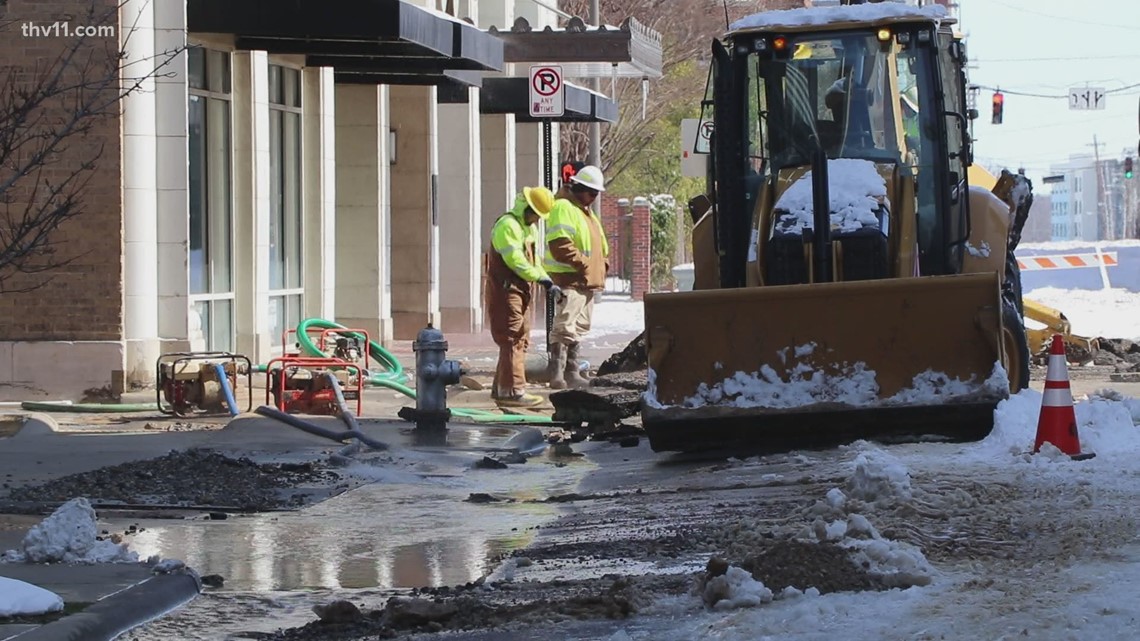On Tuesday morning, Central Arkansas Water responded to 8 water breaks simultaneously, but officials said the system was holding up well.
LITTLE ROCK, Ark. – Water pipe breaks and installation problems will continue to be a problem until temperatures rise above freezing.
Plumbing companies have seen an increase in calls related to pipe freezing in the past 24 hours.
While Central Arkansas Water was responding to the major waterfall at 100 W. 4th St. in Little Rock on Tuesday, February 16, it was simultaneously responding to seven other breaks.
Doug Shackelford, director of public affairs for Central Arkansas Water, said they want the Arkansans to know the water is still flowing.
“We don’t want people without water, so we’re doing everything we can to get it done as quickly as possible,” he said.
Despite preparing ahead of time and calling in additional crews, the pipes in the Central Arkansas Water System are freezing, but Shackelford said this was to be expected.
“Every time we see a weather event, it’s a pretty drastic change in temperature that increases the potential for burst pipes,” he said.
It’s what they call a “spontaneous break,” and according to Shackelford, this mostly happens in smaller and older pipes.
“Not a major like a 42-inch line break or anything like that, it’s a 12-inch line break or smaller,” he said.
Central Arkansas Water has more than 2,500 miles of pipeline and spans seven counties. While eight breaks at a time isn’t ideal, Shackelford said they’re not worried.
“In a perfect world there would be no breaks, but that’s pretty good. The system is holding up pretty well,” he said.
For local plumbing companies like Sanders Services, Cody Jones said the calls for frozen pipes keep coming in.
“We got more than 42 as of yesterday and they’re rolling in as we speak,” he said.
The hardest part for plumbers like Jones is trying to thaw people’s lines.
“It’s just one of those things that we have to endure and pray for the best,” he said.
Jones said when to correct it depends on the situation, but either way it won’t be quick.
“It’s just a process. A slow, slow process to get the water back into homes,” he said.
We know everyone has heard it multiple times, but experts said the best thing you can do is make your faucets drip. That includes in your kitchen, bathroom and shower. It also helps to open the cabinet doors under the faucets.


Comments are closed.